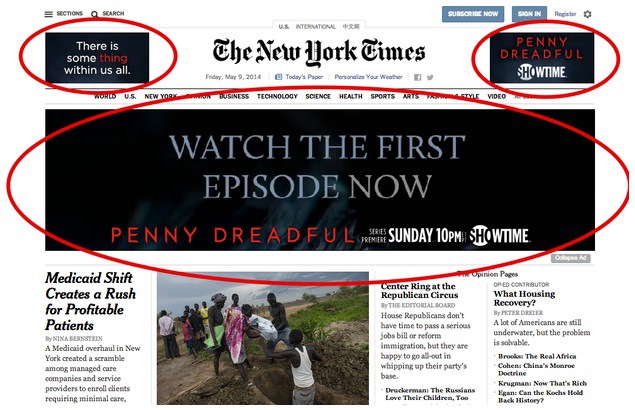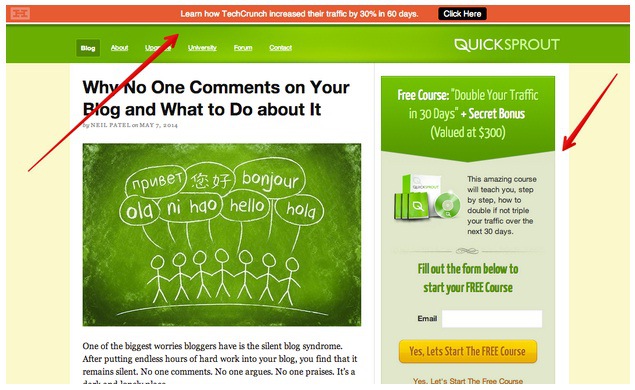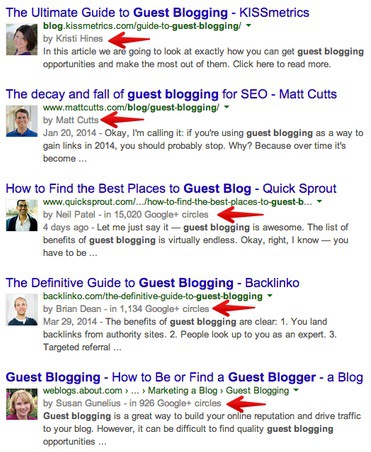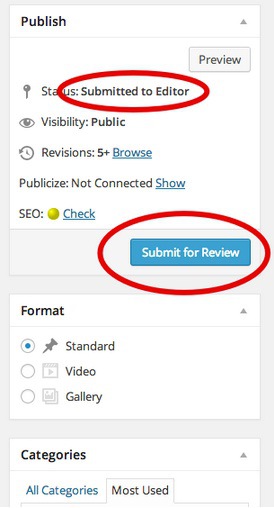
Guest blogging has its pitfalls and its advantages, both of which are obvious. I’ve explained before how you can find high-quality legitimate places to guest blog. Now, I want to tell you how to identify and avoid a bad guest blogging site.
I can’t emphasize enough the danger of spammy guest blogging. The bombshell announcement from Matt Cutts was a needed caution to many would-be spammers. He wrote, “So stick a fork in it: guest blogging is done; it’s just gotten too spammy.”
We know, thanks to Cutts’s own disclaimers, that guest blogging is notactually done. But we also know, thanks to Cutts’s rampage against blog networks, that guest blogging is under intense scrutiny and potential penalization—at least for blog networks.
There are severe consequences to spammy guest blogging. Linking from a spammy guest blog network can ruin your site and tarnish your online reputation. If you are interested in the advantages of guest blogging, then you absolutely must know how to steer clear from a spammy guest blogging site.
Here are eight questions to ask about a potential guest blogging site.
1. Are There Ads Above The Fold?
Google doesn’t like to see ads above the fold. January 2012’s “page layout algorithm improvement” by Google, also known as the Top Heavy Algorithm, created a problem for ad-greedy sites. Such sites allowed advertising to ravage the bulk of above-the-fold real estate, creating an unpleasant user experience. Motivated by these complaints, Google rolled out the algo and has since refreshed it at least three times.
Here’s how Cutts described it: “ If you click on a website and the part of the website you see first either doesn’t have a lot of visible content above-the-fold or dedicates a large fraction of the site’s initial screen real estate to ads, that’s not a very good user experience. Such sites may not rank as highly going forward.”
If your potential guest blog site attempts to bring in ad revenue, that’s okay. But just make sure that it has an overall pleasant user experience.
I caution against ads above the fold, and I have good reason for doing so. However, there are a few exceptions to the apparent devaluing of sites with top-positioned ads.
The New York Times has at least three ad blocks above the fold. Any algorithmic devaluing due to this ad placement is outweighed by the stature and validity of the publication.

Often, a site has internal-focused “ads.” These are less ads than they are conversion elements for the site. Such features are not penalized.
On my blog site, you’ll see the persistent header and several sidebar blocks with calls to action. These are simply features of the site, even though they “advertise” my products. This is not considered a top-heavy ad layout.

2. Does The Design Look Outdated or Unpleasant?
If it looks like spam, it probably is spam. One of the ways you can find out is simply by giving the site the eyeball test. How does it look?
Often, you can tell from a quick glance whether a site is spam or not. Here are some of the issues you should insist upon in a guest blogging site. Each of these are backed by algorithmic factors.
- The content should be visible above the fold. The Top Heavy Algorithm cited above means that sites that lack content above the fold are subject to devaluation.
- There should be clear navigation paths. Site navigation structure affects SEO significantly. Some navigation issues are obvious—providing a sitemap.xml, using a navigation header, creating internal links, etc. But sometimes, when webmasters and SEOs are working separately, other negative navigation problems can creep up. For example, some developers use ajax effects, but neglect to implement the correct URL linking structure. Other times, designers create parallax scrolling effects on a single page website, but provide no navigation to other content-rich pages on the site. These issues are important for navigation, and therefore for SEO.
- There should be no flash. Flash sites have been done for years. If you’re looking at a flash site, just forget it.
3. Do Articles Deal With Random Far-Ranging Topics, or Are They Organized Into Silos?
A telltale sign of a spam site is its random collection of unorganized content. There is no defined topic to the site. Such a haphazard collection of content does not help users. This kind of content is published in an attempt to rank for any keyword, and thus to generate traffic and ad revenue.
The following two points are positive indications of a site that focuses on usability in its design and content curation. This is what you want:
- The site is about one niche subject. Your goal in guest blogging is to find relevant sites in your niche. Sites that deal with a single subject in-depth are ideal guest blogging sites. You don’t want to see a website that deals with petenia care in one article, and then the next article about Titanfall maneuvers.
- The site is about multiple subjects, but has clear content organization. This is the typical arrangement of most authoritative news sites. There are ways to organize a lot of data in a way that helps the users and makes sense. The header below from The Atlantic, conveys clear categorical breakdown for a user to access the content that they are interested in.

4. Is Google Authorship Implemented?
One confirming sign of a trustworthy guest blogging site is implementation of Google authorship. A site that uses Google authorship evidently knows what they’re doing when it comes to guest blogging.
In the screenshot below, you can easily tell from Google whether or not a site uses authorship markup.

I strongly encourage you to seek sites that use Google authorship. Besides, the more content you publish under your authorship, the better your own personal brand becomes.
5. Is The Content Reviewed or Edited?
Unedited content is a red flag. If you don’t personally know the site owner, yet are automatically given publish privileges, you should be cautious about the site’s validity. Most sites that value their content and reputation will place some sort of editorial process in place.
The “submit for review” button on a WordPress post should give you a level of confidence that content is being vetted and the site has a care about its integrity.

6. Is There a List of Enforced Requirements For Guest Blogging?
If the site you’re angling for has a strict list of standards and requirements, don’t despair. This is actually a very positive sign.
If a site accepts guest bloggers, they are undertaking a significant risk. In light of the crackdown on guest blogging networks, it’s evident that Google takes a dim view of indiscriminate guest blog posting. A site must be stringent on its standards in order to avoid penalties or devaluation.
The requirements are a positive sign. You should comply with them.
7. Is The Site DA Above 25?
As a general rule, any site you post a guest blog to should have a Domain Authority that exceeds the DA of your own site, especially if you are hoping to gain a backlink. So, if you have a website with a DA of, say, 62, you probably don’t need to be spending time creating an article for a site with a DA of 41.
I do not recommend that you guest blog anywhere with a DA below 25. Sites with a historic web presence and a low DA are sites that are characteristically spam.
One of the first things you should do when checking out a potential guest blogging site is to quickly check the DA using a resource like opensiteexplorer.org.
8. Do You Have to Pay to Post?
This is a no-brainer. You should never, ever have to pay to post a guest blog. Any exchange of content that also involves an exchange of money, goods, or services is highly suspect. If you are asked to provide compensation for “hosting,” “publication” or “editorial services” I highly recommend you look elsewhere for guest posting opportunities.
Conclusion
The era of guest blogging is alive and well, but it’s more important than ever to be extremely cautious. The number of sites that provide legitimate and reputable guest blogging are few and far between.
Look carefully, choose carefully, and write carefully. You have a lot to gain through guest blogging. As long as you’re staying vigilant and weeding out the bad guest blogging sites, you’ll begin to see huge advantages.
[“source-searchenginejournal”]
